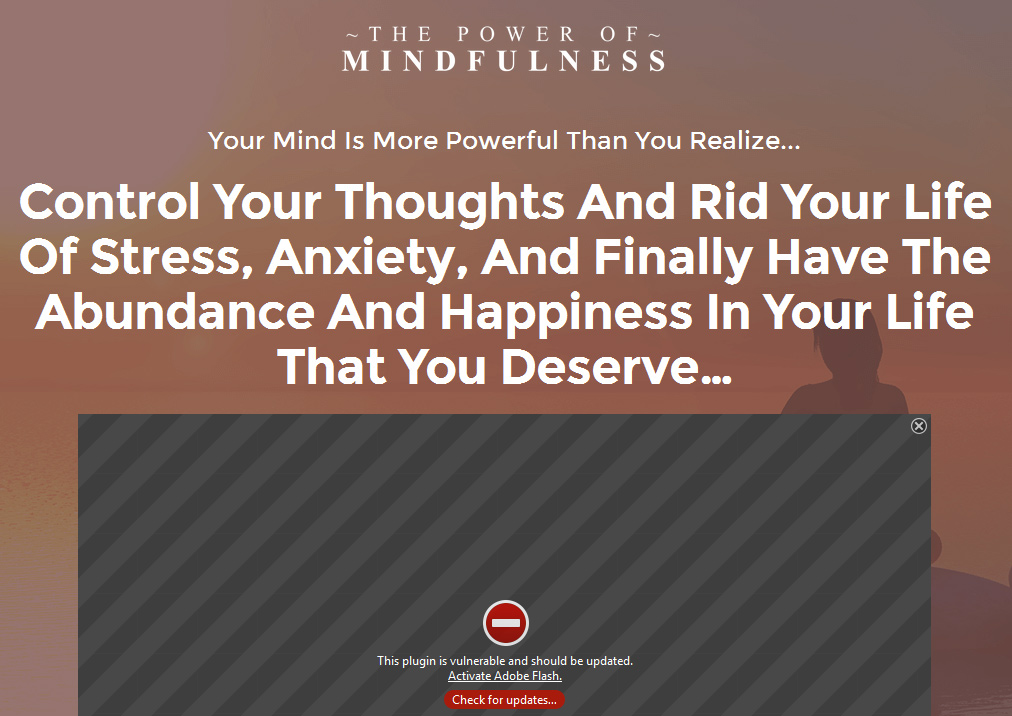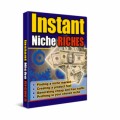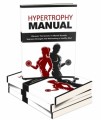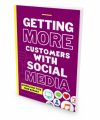Salespage Snapshot:

>>> Click Here To View Full Sales Page…
Table of Contents
Introduction ..3
Chapter 1: What is Mindfulness? ……..5
Mindfulness in Daily Life …..6
Chapter 2: How to Start Using Mindfulness …..9
Tips for Rapid Improvement ……… 12
Chapter 3: Introducing Cognitive Restructuring ……… 14
A Brief Primer on CBT ……. 14
Techniques Used in CBT …. 16
Chapter 4: How to Use Cognitive Restructuring in the Real World ….. 18
Fear Setting ………. 19
Remove the Fear and Date Anyone ……….. 21
Chapter 5: Stress and Flow States ….. 23
Chronic Stress …… 25
Positive Stress …… 26
Tapping Into Hidden Powers ……… 28
Chapter 6: Why You Should Visualize 30
Embodied Cognition ……… 30
Visualization for Productivity …….. 31
Chapter 7: The Power of Belief ……… 33
How to Become Socially Fearless With Hypothesis Testing 34
The Law of Attraction ……. 35
Conclusions . 35
Sample Content Preview
Chapter 1: What is Mindfulness?
I could arrange this book in such a way that you have to build up to mindfulness. I could talk about how bad for you stress is, or I could talk about neuroscience.
But I’ll get to that later. What you probably want to know right off the bat is just what mindfulness is. Where did it come from? And how can you use it just to get a little more calm and relaxation in your life?
We’ll look at that first and from there, we’ll delve into how you can utilize some more technical neuroscience in order to tap into the more profound capabilities of your brain…
So what exactly is mindfulness?
Essentially, mindfulness is a form of meditation that has been adopted by CBT. CBT in turn is ‘cognitive behavioral therapy’; a psychotherapeutic approach that can be used to treat all manner of psychological conditions like anxiety, phobias, addiction etc.
Mindfulness essentially gives us a tool that we can use to not only calm our thoughts and escape the stressors of the day but also reflect on the contents of our mind in the interests of self-improvement.
Meditation generally has something of a ‘bad’ reputation. That is to say that a lot of people associate it with religion or esoteric ideas and they think that they can’t meditate unless they’re
‘spiritual’. This can be off-putting for someone who doesn’t hold any religious beliefs or who doesn’t like esoteric ideas in general.
But in fact you can practice meditation whether you are religious or an atheist. All meditation really is, is a directed attempt to control your thoughts and the content of your mind and thereby to gain some peace and quiet or at least to be able to better understand the contents of your own brain.
Often this means completely silencing all thoughts. Many types of meditation, such as transcendental meditation, instruct you to think of ‘absolutely nothing’ and often this is achieved by focussing on your breathing, a mantra or a physical object like a candle flame. This can be difficult for beginners though, as they constantly find their mind wandering.
The idea behind mindfulness meditation then is not to try and empty your thoughts but instead to simply step back from them and ‘observe’ them like a detached third party. This way, you aren’t letting your thoughts affect you and make you stressed but you also aren’t going to struggle with not being ‘allowed’ to think anything.
Meanwhile, using this technique will also allow you to become more aware of your own thoughts and thereby able to edit any thoughts that are leading you into trouble. For instance, if you constantly find yourself thinking about the ways that you could hurt yourself, you might notice that this is a bad habit and then attempt to fix that.
This may be the long term aim of mindfulness when used in CBT. In the short term though, we are simply to use it in order to remove ourselves from our thoughts and emotions so that we can get some calm and thereby recover ready to tackle the day ahead.
Mindfulness in Daily Life
This is what mindfulness refers to in most cases but it has also been appropriated to mean a lot more. If mindfulness means being more aware of your thoughts, then it can also be applied outside of meditation and to the way you go about your day. In this case, mindfulness simply means being mindful of what you’re focussing on and what you’re thinking at any given point. This is useful because very often you’ll find that your mind isn’t perhaps where it should be.
For example, if you are walking through a beautiful scenic woodland but you are thinking about work, then as far as your body is concerned you may as well be at work. In this case, mindfulness can be used simply to make yourself more aware of where you are and to actually focus on what’s around you. That means feeling the breeze on your skin, looking at the beautiful flowers and smelling the fresh air. When you do all that, you will benefit much more from the experience.
Likewise, you can use mindfulness to direct your attention to all manner of other things. For example your physical sensations. Often we aren’t aware of just how we’re sitting, how we’re standing or how we’re feeling.
Take a moment right now to reflect on this. How comfortable are you at the moment? Does any part of your body hurt? If you’re sitting down, then where is most pressure on you? Can you feel your clothes against your body? A watch maybe? How warm are you? Are you leaning more to one side?
This kind of mindfulness can be useful if you want to try and fix your posture but also if you want to improve your abilities in sports or just move more efficiently.
Being more mindful of the way you speak can meanwhile help you to speak more eloquently, to stop using derogatory words, to stop swearing, or to change the whole way that people perceive you. For example, if you want to sound more intelligent, then you can simply try using bigger words or speaking a little more slowly.
You can also use mindfulness to be happier in every day life. Simply try to stop letting negative emotions affect you by identifying them as temporary and destructive. You can simply ‘notice’ that you’re getting angry and acknowledge that your thoughts will be tainted by that. With practice, this can make you a much calmer and much happier person.
But what do you find when you try and do this?
In all likelihood, you’ll find that you forget. This is just the same way that you forget to pick up bread when your other half asks you to. And it’s just the same way you forget to pick up your keys on the way out of the house.
The point is: most of the time we have no control over what we’re focussed on or what we’re paying attention to. And as such, we find ourselves forgetting things, getting into bad habits or stressing when we should be enjoying ourselves.
Practicing mindfulness both as a form of meditation and during the day can therefore help you to improve your ability to control your thoughts and thereby to decide how you want to improve yourself and what you want to focus on.
Chapter 2: How to Start Using Mindfulness
So that’s mindfulness in a nutshell, the next question is how you start using it.
One option is to use online ‘guided meditations’. These are simply recordings that instruct you on what to do as you try meditating. For example, they might tell you to close your eyes and breathe in and out through the nose, then they might tell you to think about your body. One particularly good tool that does this is the Headspace App which can be downloaded for Android or iOS but which is also available to use through the web. This will talk you through numerous guided meditations but only the first 10 are free. Still, you can learn enough from those 10 sessions in order to then thrive without the app.
Generally though, most mindfulness meditations will take a very similar procedure and you can go through the steps then without necessarily needing to be talked through it. And in fact, if you can do your meditation without guidance, then you should find that you’re actually more effective at it because you won’t be continuously interrupted by someone’s voice.
Let’s go over what the steps will generally be for a mindfulness meditation session…
Other Details- 10 Articles (TXT)
- 1 Ebook (PDF), 36 Pages
- 5 Graphics (PNG)
- 1 Salespage (HTML)
- 10 Ecovers (JPG)
- 10 Promotional Ad Materials (Emails, Banners)
- Social Media Images, Mindmap, Resource Report, Cheat Sheet, Checklist, Legal pages, Sales Video
- Year Released/Circulated: 2016
- File Size: 93,473 KB
License Details:
[YES] Can be packaged
[YES] You Can Use This Product Yourself
[YES] Can be sold as it is not less than $7 price tag!
[YES] Can pass on the Resell Rights privilege to your customers.
[YES] Can Add This Product to a Membership Site or Bundled Within a Product Package as a Bonus.
[YES] Can be used to create audio/webinar/video products
[YES] Can Give Away The Product (NOT The Source Code Files) To Your Subscribers, Members or Customers as a Bonus or Gift.
[YES] Can change sales page and/or graphics
[YES] Can be added to paid membership sites
[YES] Can sell master resale rights
[NO] Add to a free membership sites
[NO] You can’t just pass away the product to anyone
[NO] Contents of the product can be edited, modified or altered.














